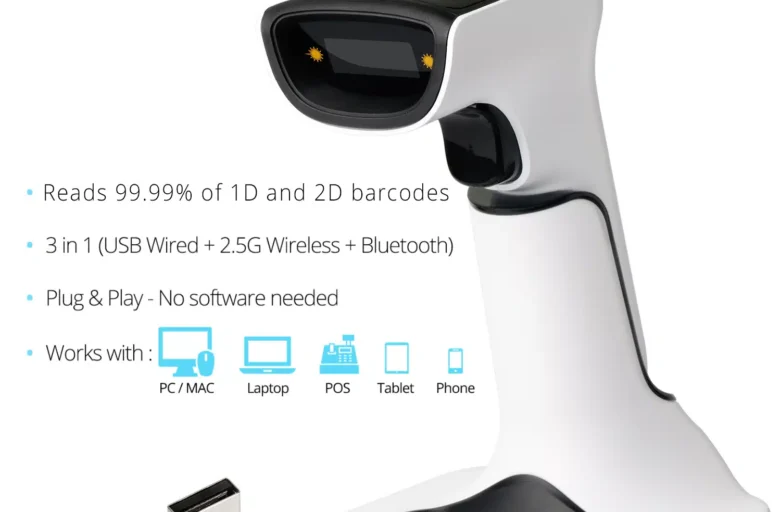In today’s fast-paced business landscape, optimizing efficiency and minimizing operational costs are key priorities for organizations across various industries. One technology that has proven instrumental in achieving these goals is barcode scanning. By integrating barcode scanners into your supply chain processes, you can streamline operations, improve accuracy, and ultimately maximize return on investment (ROI). In this comprehensive guide, we’ll explore the benefits of integrating barcode scanners into your supply chain and provide practical tips on how to do so effectively.
Understanding the Role of Barcode Scanners in the Supply Chain:
Barcode scanners play a critical role in the modern supply chain by enabling accurate and efficient tracking of inventory, assets, and shipments. They facilitate real-time data capture, which is essential for inventory management, order fulfillment, and logistics operations. By scanning barcodes attached to products, packages, and storage locations, businesses can:
- Improve inventory accuracy
- Enhance visibility and traceability
- Expedite order processing
- Minimize errors and discrepancies
- Optimize warehouse space utilization
Benefits of Integrating Barcode Scanners into Your Supply Chain:
1. Increased Efficiency:
Barcode scanners automate data capture processes, eliminating the need for manual data entry and reducing the risk of human error. This results in faster and more accurate transactions, leading to overall process efficiency improvements.
2. Enhanced Inventory Management:
With barcode scanning, businesses can accurately track inventory levels in real time, enabling better inventory visibility and control. This helps prevent stockouts, overstocking, and shrinkage, leading to improved inventory management and cost savings.
3. Improved Order Accuracy:
By scanning barcodes at various stages of the order fulfillment process, such as picking, packing, and shipping, businesses can ensure order accuracy and minimize fulfillment errors. This leads to higher customer satisfaction and fewer returns or exchanges.
4. Streamlined Receiving and Replenishment:
Barcode scanning facilitates quick and accurate receiving of incoming shipments and replenishment of stock. By scanning barcodes upon receipt, warehouse staff can update inventory records instantly, reducing processing times and improving overall efficiency.
5. Better Data Analytics:
Barcode scanning generates valuable data that can be used for analytics and insights. By analyzing barcode scan data, businesses can identify trends, optimize processes, and make informed decisions to drive continuous improvement and strategic growth.
Tips for Effective Integration of Barcode Scanners:
1. Assess Your Current Processes:
Before implementing barcode scanners, assess your existing supply chain processes to identify areas for improvement and determine where barcode scanning can add the most value.
2. Choose the Right Barcode Scanning Technology:
Select barcode scanners that are well-suited to your specific operational requirements and environment. Consider factors such as scanning range, durability, connectivity options, and compatibility with existing systems.
3. Design Optimal Barcode Labels:
Create barcode labels that are clear, durable, and easy to scan. Ensure that barcodes are properly formatted and placed on products, packages, and storage locations for optimal readability.
4. Provide Adequate Training:
Train your employees on how to use barcode scanners effectively and integrate them into their daily workflows. Provide ongoing support and guidance to ensure successful adoption and usage of the technology.
5. Integrate with Existing Systems:
Integrate barcode scanning technology with your existing enterprise resource planning (ERP), warehouse management system (WMS), and other relevant software systems to ensure seamless data exchange and process integration.
6. Monitor Performance and Continuously Improve:
Regularly monitor the performance of your barcode scanning operations and gather feedback from employees to identify areas for improvement. Use data analytics to track key performance metrics and optimize processes for maximum efficiency and ROI.
Supply Chain Integration:
Integrating barcode scanners into your supply chain can yield significant benefits in terms of efficiency, accuracy, and cost savings. By following the tips outlined in this guide and leveraging the capabilities of barcode scanning technology, businesses can maximize ROI and gain a competitive edge in today’s dynamic market environment.
Remember, the key to success lies in strategic planning, effective implementation, and continuous improvement. With barcode scanning technology as your ally, you can unlock new levels of efficiency and productivity in your supply chain operations.
